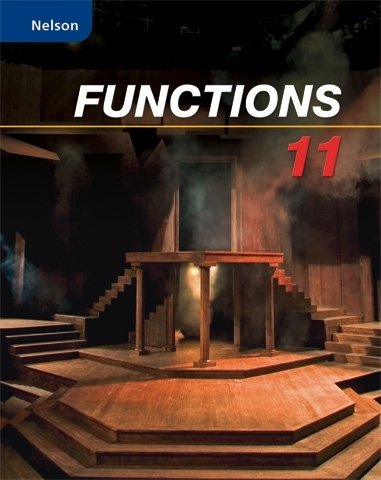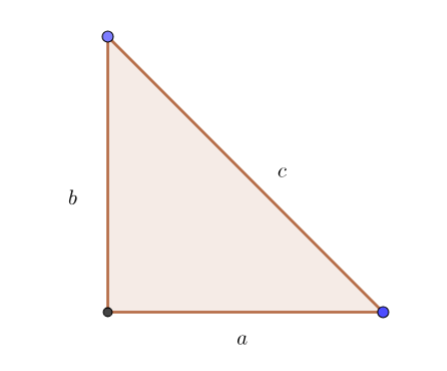
All Solutions
Page 102: Check Your Understanding
$$
begin{align*}
x^2-6x-27&=x^2+(-9+3)x+(-9times 3)\
&=(x-9)(x+3)
end{align*}
$$
$x^2+(a+b)x+(ab)=(x+a)(x+b)$
$$
begin{align*} 25x^2-49 &=(5x)^2-(7)^2\
&=(5x+7)(5x-7)
end{align*}
$$
$$
a^2-b^2=(a+b)(a-b)
$$
bold{c);;;}
$$
$$
begin{align*} 4x^2+20x+25 &=(2x)^2+2(2x)(5)+5^2\
&=(2x+5)^2
end{align*}
$$
$$
a^2+2ab+b^2=(a+b)^2
$$
bold{d);;;}
$$
$$
begin{align*} 6x^2-x-2 &=6x^2-4x+3x-2\
&=2x(3x-2)+1(3x-2)\
&=(2x+1)(3x-2)\
end{align*}
$$
$ax^2+bx+c$
We must find numbers whose sum is $b$ and product is $ac$
In this case $ac=-12$ and $-1=-4+3$
Then decompose the middle term and find the common factor.
Remember that
$$
a(b+c)+d(b+c)=(a+d)(b+c)
$$
b) $(5x+7)(5x-7)$
c) $(2x+5)^2$
d) $(2x+1)(3x-2)$
$$
begin{align*}
ac+bc-ad-bd&=\
&=(ac+bc)-(ad+bd) tag{text{separate into two groups}}\
&=c(a+b)-d(a+b) tag{text{ factor out the GCF from each of the two groups}}\
&=(a+b)(c-d) tag{text{factor out (a+b)}}\
end{align*}
$$
$$
begin{align*}
x^{2}+2x+1-y^{2}&=\
&=(x^{2}+2x+1)-y^{2} tag{text{group the first three terms together}}\
&=(x+1)^{2}-y^{2} tag{text{use square the binomials}}\
&=(x+1-y)(x+1+y) tag{text{use diference of two squares}}\
end{align*}
$$
$$
begin{align*}
x^{2}-y^{2}-10y-25&=\
&=x^{2}-(y^{2}+10y+25)tag{text{separate into two groups}}\
&=x^{2}-(y+5)^{2}\
&=(x-(y+5))(x+(y+5))\
&=(x-y-5)(x+y+5)
end{align*}
$$
b) $(x+1-y)(x+1+y)$
c) $(x-y-5)(x+y+5)$
This is a trinomial, there we need use decomposition by finding two
numbers whose sum is -3 and whose product is -28.These numbers are -7, and then group the first two terms together and the last two terms together and factor out the common factor from each of the two groups. Two groups have a common $(x +4)$, so we can factor out $(x +4)$ :
$$
begin{align*}
x^{2}-3x-28&=\
&=x^{2}+4x-7x-28\
&=x(x+4)-7(x+4)\
&=(x+4)(x-7)\
end{align*}
$$
This is a binomial,use difference of squares we get :
$$
begin{align*}
36x^{2}-25&=\
&=(6x)^{2}-5^{2} \
&=(6x-5)(6x+5)\
end{align*}
$$
This is a trinomial, use square of the binomial we get :
$$
begin{align*}
9x^{2}-42x+49&=\
&=(3x)^{2}-2cdot3xcdot7+7^{2}\
&=(3x-7)^{2}\
end{align*}
$$
This is a trinomial, there we need use decomposition :
$$
begin{align*}
2x^{2}-7x-15&=\
&=2x^{2}-10x+3x-15tag{text{separate -7x as -10x+3x}}\
&=2x(x-5)+3(x-5) tag{text{factor out $x-5$}}\
&=(x-5)(2x+3)\
end{align*}
$$
b) $(6x-5)(6x+5)$
c) $(3x-7)^{2}$
d) $(x-5)(2x+3)$
$$
begin{align*}
4x^{3}-6x^{2}+2x&=\
&=2x(2x^{2}-3x+1) ~~text{text{divided each term by the
common factor 2x, factor out 2x}}\
&=2x(2x^{2}-2x-x+1) ~~text{text{use decomposition}}\
&=2x(2x(x-1)-(x-1))\
&=2x(x-1)(2x-1) ~~text{factor out (x-1)}
end{align*}
$$
$$
begin{align*}
&3x^{3}y^{2}-9x^{2}y^{4}+3xy^{3}=3xy^{2}(x^{2}-3xy^{2}+y)\ &text{divided each term by the
common factor $3xy^{2}$, factor out $3xy^{2}$}\
end{align*}
$$
The two groups have the same common factor $(a+1)$, so we can factor out $(a+1)$ leaving the following:
$$
begin{align*}
4a(a+1)-3(a+1)&=(a+1)(4a-3)\
end{align*}
$$
The three groups have the same common factor $(x+1)$, so we can factor out $(x+1)$ leaving the following:
$$
begin{align*}
7x^{2}(x+1)-x(x+1)+6(x+1)&=\
&=(x+1)(7x^{2}-x+6)\
end{align*}
$$
First, we need simplify this expression, and then group like terms.
$$
begin{align*}
5x(2-x)+4x(2x-5)-(3x-4)&=\
&=10x-5x^{2}+8x^{2}-20x-3x+4\
&=3x^{2}-13x+4\
&=3x^{2}-12-x+4\
&=3x(x-4)-(x-4)\
&=(x-4)(3x-1)\
end{align*}
$$
$4t(t^{2}+4t+2)-2t(3t^{2}-6t+17)$
First, we use the distributive property, then simplify this expression, and then group like terms.
$$
begin{align*}
4t(t^{2}+4t+2)-2t(3t^{2}-6t+17)&=\
&=4t^{3}+16t^{2}+8t-6t^{3}+12t^{2}-34t\
&=-2t^{3}+28t^{2}-26t\
&=-2t(t^{2}-14t+13)\
&=-2t(t^{2}-t-13t+13)\
&=-2t(t(t-1)-13(t-1))\
&=-2t(t-1)(t-13)\
end{align*}
$$
b) $3xy^{2}(x^{2}-3xy^{2}+y)$
c) $(a+1)(4a-3)$
d) $(x+1)(7x^{2}-x+6)$
e) $(x-4)(3x-1)$
f) $-2t(t-1)(t-13)$
$$
begin{align*}
x^{2}-5x-14&=x^{2}+2x-7x-14\
&=(x^{2}+2x)-(7x+14)\
&=x(x+2)-7(x+2)\
&=(x+2)(x-7)\
end{align*}
$$
Then, we group the first two terms and the final two terms
Now, factor an $x$ out of the first grouping and a $7$ out of the second grouping.
We can factor out a common factor of $(x+2)$, so we get the final factored form.
$$
begin{align*}
x^{2}+4xy-5y^{2}&=x^{2}+4xy+4y^{2}-9y^{2}\
&=(x^{2}+4xy+(2y)^{2})-(3y)^{2}\
&=(x+2y)^{2}-(3y)^{2}\
&=(x+2y-3y)(x+2y+3y)\
&=(x-y)(x+5y)\
end{align*}
$$
Then, group the first three terms, this trinomial is a perfect square,
Use difference of the square and slimplify expression in the parentheses we get finally factored form.
$$
begin{align*}
6m^{2}-90m+324&=6(m^{2}-15m+54)\
&=6[m^{2}-6m-9m+54]\
&=6[(m-6m)-(9m-54)]\
&=6[m(m-6)-9(m-6)]\
&=6(m-6)(m-9)\
end{align*}
$$
Then, we group the first two terms and the final two terms
Now, factor an $m$ out of the first grouping and a $9$ out of the second grouping.
We can factor out a common factor of $(m-6)$, so we get the final factored form.
$$
begin{align*}
2y^{2}+5y-7&=2y^{2}-2y+7y-7\
&=(2y^{2}-2y)+(7y-7)\
&=2y(y-1)+7(y-1)\
&=(y-1)(2y+7)\
end{align*}
$$
Then, we group the first two terms and the final two terms
Now, factor an $2y$ out of the first grouping and a $7$ out of the second grouping.
We can factor out a common factor of $(y+1)$, so we get the final factored form.
$$
begin{align*}
8a^{2}-2ab+21b^{2}&=8a^{2}+12ab-14ab-21b^{2}\
&=(8a^{2}+12ab)-(14ab+21b^{2})\
&=4a(2a+3b)-7b(2a+3b)\
&=(2a+3b)(4a-7b)\
end{align*}
$$
Then, we group the first two terms and the final two terms
Now, factor an $4a$ out of the first grouping and a $7b$ out of the second grouping.
We can factor out a common factor of $(2a+3b)$, so we get the final factored form.
$$
begin{align*}
16x^{2}+76x+90&=2(8x^{2}+38x+45)\
&=2(8x^{2}+18x+20x+45)\
&=2[(8x^{2}+18x)+(20x+45)]\
&=2[2x(4x+9)+5(4x+9)]\
&=2(4x+9)(2x+5)\
end{align*}
$$
Then, we group the first two terms and the final two terms
Now, factor an $2x$ out of the first grouping and a $5$ out of the second grouping.
We can factor out a common factor of $(4x+9)$, so we get the final factored form.
b) $(x-y)(x+5y)$
c) $6(m-6)(m-9)$
d) $(y-1)(2y+7)$
e) $(2a+3b)(4a-7b)$
f) $2(4x+9)(2x+5)$
$textbf{Difference of squares}$ can be factored as follows:
$$
color{#4257b2}{a^{2}-b^{2}=(a-b)(a+b)}
$$
$$
begin{align*}
x^{2}-9&=x^{2}-3^{2}\
&=(x-3)(x+3)\
end{align*}
$$
$$
begin{align*}
4n^{2}-49&=(2n)^{2}-7^{2}\
&=(2n-7)(2n+7)\
end{align*}
$$
$$
begin{align*}
x^{8}-1&=(x^{4})^{2}-1^{2}\
&=(x^{4}-1)(x^{4}+1)\
&=((x^{2})^{2}-1)(x^{4}+1)\
&=(x^{2}-1)(x^{2}+1)(x^{4}+1)\
&=(x-1)(x+1)(x^{2}+1)(x^{4}+1)\
end{align*}
$$
$$
begin{align*}
9(y-1)^{2}-25&=3^{2}(y-1)^{2}-5^{2}\
&=(3(y-1))^{2}-5^{2}\
&=(3y-3)^{2}-5^{2}\
&=(3y-3-5)(3y-3+5)\
&=(3y-8)(3y+2)\
end{align*}
$$
$$
begin{align*}
3x^{2}-27(2-x)^{2}&=3[x^{2}-9(2-x)^{2}\
&=3[x^{2}-(3(2-x))^{2}]\
&=3[x^{2}-(6-3x)^{2}]\
&=3[(x-(6-3x))(x+(6-3x))]\
&=3(x-6+3x)(x+6-3x)\
&=3(4x-6)(-2x+6)\
&=3cdot2(2x-3)cdot(-2)(x-3)\
&=-12(2x-3)(x-3)\
end{align*}
$$
$$
begin{align*}
-p^{2}q^{2}+81&=81-p^{2}q^{2}\
&=9^{2}-(pq)^{2}\
&=(9-pq)(9+pq)
end{align*}
$$
b) $(2n-7)(2n+7)$
c) $(x+1)(x-1)(x^{2}+1)(x^{4}+1)$
d) $(3y-8)(3y+2)$
e) $-12(2x-3)(x-3)$
f) $(9-pq)(9+pq)$
$$
begin{align*}
ax+ay+bx+by&=(ax+ay)+(bx+by) tag{text{separate into two groups}}\
&=a(x+y)+b(x+y) tag{text{ factor out the GCF from each of the two groups}}\
&=(x+y)(a+b) tag{text{factor out (a+b)}}\
end{align*}
$$
$$
begin{align*}
2ab+2a-3b-3&=(2ab+2a)-(3b+3) tag{text{separate into two groups}}\
&=2a(b+1)-3(b+1) tag{text{ factor out the GCF from each of the two groups}}\
&=(b+1)(2a-3) tag{text{factor out (b+1)}}\
end{align*}
$$
$$
begin{align*}
x^{3}+x^{2}-x-1&=(x^{3}+x^{2})-(x+1) tag{text{separate into two groups}}\
&=x^{2}(x+1)-(x+1) tag{text{ factor out the GCF from each of the two groups}}\
&=(x+1)(x^{2}-1) tag{text{factor out (x+1)}}\
&=(x+1)(x-1)(x+1) tag{text{use difference of the squares}}\
&=(x+1)^{2}(x-1)\
end{align*}
$$
$$
begin{align*}
1-x^{2}+6x-9&=1-(x^{2}-6x+9) tag{text{group last three terms}}\
&=1-(x-3)^{2} tag{text{ use square of the binomial}}\
&=((1-(x-3))(1+(x-3)) tag{text{use difference of the square}}\
&=(1-x+3)(1+x-3) \
&=(4-x)(x-2)\
end{align*}
$$
$$
begin{align*}
a^{2}-b^{2}+25+10a&=a^{2}+10a+25-b^{2} tag{text{ change places of the terms}}\
&=(a^{2}+10a+25)-b^{2} tag{text{ group first three terms}}\
&=(a+5)^{2}-b^{2} tag{text{use square of the binomial}}\
&=(a+5-b)(a+5+b) tag{text{use difference of the squares}}
end{align*}
$$
$$
begin{align*}
2m^{2}+10m+10n-2n^{2}&=2[m^{2}-n^{2}+10m+10n] tag{text{factor out 2, and change places of the terms}}\
&=2[(m^{2}-n^{2})+(10m+10n)] tag{text{group first two and last two terms separately}}\
&=2[(m-n)(m+n)+5(m+n)] tag{text{ use difference of the squares}}\
&=2(m+n)(m-n+5) tag{text{factor out (m+n)}}\
end{align*}
$$
b) $(b+1)(2a-3)$
c) $(x+1)^{2}(x-1)$
d) $(4-x)(x-2)$
e) $(a+5-b)(a+5+b)$
f) $2(m+n)(m-n+5)$
$$
begin{align*} (x-y)(x^2+y^2) &=x^2(x-y)+y^2(x-y)\
&=x^3-x^2y+xy^2-y^3\
&neq x^3-y^3
end{align*}
$$
Therefore, Andrij’s statement is NOT correct.
$$
(x-y)(x^2+y^2)=x^3-x^2y+xy^2-y^3neq x^3-y^3
$$
$$
begin{align*}
2x(x-3)+7(3-x)&=2x(x-3)-7(x-3)\ &text{text{we get -1 in front of the second parenthese and change the places in parenthese }}\
&=(x-3)(2x-7)\ &text{text{factor out $ (x-3)$}}\
end{align*}
$$
$$
begin{align*}
xy+6x+5y+30&=(xy+6x)+(5y+30)\ &text{text{separate into two groups}}\
&=x(y+6)+5(y+6)\ &text{text{ factor out the GCF from each of the two groups}}\
&=(y+6)(x+5)\ &text{text{factor out (y+6)}}\
end{align*}
$$
$$
begin{align*}
x^{3}-x^{2}-4x+4&=
&=(x^{3}-x^{2})-(4x-4) text{text{group first two terms and last two terms separately}}\
&=x^{2}(x-1) -4(x-1)\ &text{text{ factor out the GCF from each of the two groups}}\
&=(x-1)(x^{2}-4)\ &text{text{factor out (x-1)}}\
&=(x-1)(x^{2}-2^{2})\
&=(x-1)(x-2)(x+2)\ &text{text{use difference od the squares}}
end{align*}
$$
$$
begin{align*}
y^{2}-49+14x-x^{2}&=y^{2}-(49-14x+x^{2})\ &text{text{group last three terms}}\
&=y^{2}-(7-x)^{2}\ &text{text{use square of the binomial}}\
&=(y-(7-x))(y+(7-x))\ &text{text{use difference of the squares}}\
&=(y-7+x)(y+7-x)\
end{align*}
$$
$$
begin{align*}
6x^{2}-21x-12x+42&=6x^{2}-12x-21x+42\ &text{text{change places of the middle terms}}\
&=(6x^{2}-12x)-(21x-42)\ &text{text{group first two and last two terms separately}}\
&=6x(x-2)-21(x-2)\ &text{text{ factor out the GCF from each of the two groups}}\
&=(x-2)(6x-21)\ &text{text{factor out (x-2)}}\
&=3(x-2)(2x-7)\
end{align*}
$$
$$
begin{align*}
12m^{3}-14m^{2}-30m+35&=(12m^{3}-14m^{2})-(30m-35)\ &text{text{group first two and last two terms separately}}\
&=2m^{2}(6m-7)-5(6m-7)\ &text{text{ factor out the GCF from each of the two groups}}\
&=(6m-7)(2m^{2}-5)\ &text{text{factor out (6m-7)}}\
end{align*}
$$
b) $(y+6)(x+5)$
c) $(x-1)(x-2)(x+2)$
d) $(y-7+x)(y+7-x)$
e) $3(x-2)(2x-7)$
f) $(6m-7)(2m^{2}-5)$
,$ is
$$
begin{align*}
f(n)&=(2n^3+n^2)+(6n+3)
\&=
n^2(2n+1)+3(2n+1)
\&=
(2n+1)(n^2+3)
.end{align*}
$$
In the expression above, $(2n+1)$ is always an odd number greater than $1$ for any natural number, $n.$ Hence, $f(n)$ contains an odd factor greater than $1.$ That is, $f(n)$ is divisible by an odd number greater than $1.$
begin{align*}
f(n)&=2n^{3}+n^{2}+6n+3\
end{align*}
$$
begin{align*}
&=(2n^{3}+n^{2})+(6n+3)\
end{align*}
$$
begin{align*}
&=n^{2}(2n+1)+3(2n+1)\
end{align*}
$$
begin{align*}
&=(2n+1)(n^{2}+3)\
end{align*}
$$
So, for any natural number $n$, $f(n)=(2n+1)(n^{2}+3)$ is divisible by an odd number greater than 1 for any $nin N$
f(n)=(n^2+3)(2n+1)
$$
$$
begin{align*}
c^{2}&=a^{2}+b^{2}\
a^{2}&=c^{2}-b^{2}\
&=(c-b)(c+b)tag{text{use difference of the square}}\
end{align*}
$$
.
So, answer is: $color{#c34632}{a^{2}=(c-b)(c+b)}$.

If hypotenuse 3 m longer than $b$, then $c=b+3$
Sum of the $b$ and hypotenuse is 11 m, then $b+c=11$.
Solving this system, we can determine $c$ and $b$:
$$
left.
begin{array}{rcl}
c&=&b+3 \
c+b&=&11
end{array}
right}\
\
left.
begin{array}{rcl}
c&=&b+3 \
b+3+b&=&11
end{array}
right}\
\
left.
begin{array}{rcl}
c&=&b+3 \
2b+3&=&11
end{array}
right}\
\
left.
begin{array}{rcl}
c&=&b+3 \
2b&=&8
end{array}
right}\
\
left.
begin{array}{rcl}
c&=&b+3 \
b&=&4
end{array}
right}\
\
left.
begin{array}{rcl}
c&=&4+3 \
b&=&4
end{array}
right}\
\
left.
begin{array}{rcl}
c&=&7 \
b&=&4
end{array}
right}
$$
$$
begin{align*}
a^{2}&=(c-b)(c+b)\
a^{2}&=(7-4)(7+4)\
a^{2}&=3cdot11\
a^{2}&=33\
a&=sqrt{33}\
end{align*}
$$
Answer is: $a=sqrt{33}, b=4, c=7$
a=sqrt{33}, b=4, c=7
$$
$$
begin{align*}
a^2+b^2&=c^2
\
a^2&=c^2-b^2
\
a^2&=(c+b)(c-b)
&text{(Use $a^2-b^2=(a+b)(a-b)$)}
.end{align*}
$$
$$
begin{align*}
a^2&=(b+3+b)(b+3-b)
\
a^2&=(2b+3)(3)
\
a^2&=6b+9
.end{align*}
$$
Using the equation in Item (a), with $c+b=11Rightarrow c=11-b,$ then
$$
begin{align*}
a^2&=(c+b)(c-b)
\
a^2&=(11-b+b)(11-b-b)
\
a^2&=(11)(11-2b)
\
a^2&=121-22b
.end{align*}
$$
Equating the two expressions of $a^2$ above, then
$$
begin{align*}
6b+9&=121-22b
\
6b+22b&=121-9
\
28b&=112
\
b&=dfrac{112}{28}
\
b&=4
.end{align*}
$$
Using $a^2=6b+9$ and $b=4,$ then
$$
begin{align*}
a^2&=6b+9
\
a^2&=6(4)+9
\
a^2&=24+9
\
a^2&=33
\
a&=sqrt{33}
.end{align*}
$$
Using $c=b+3$ and $b=4,$ then
$$
begin{align*}
c&=b+3
\
c&=4+3
\
c&=7
.end{align*}
$$
Hence, the side measurements are
$$
begin{align*}
a=sqrt{33} text{ }m
,&&
b=4 text{ }m
,&&
c=7 text{ }m
.end{align*}
$$
b) $a=sqrt{33}$ m, $b=4$ m, $c=7$ m
$$
begin{align*}
A&=A_{bigger}-A_{smaller}
\\
A&=pi (r_2)^2-pi (r_1)^2
\\
A&=pi r_2^2-pi r_1^2
\\
A&=pi(r_2^2-r_1^2)
\\
A&=pi(r_2+r_1)(r_2-r_1)
.end{align*}
$$
$$
begin{align*}
A&=A_{bigger}-A_{smaller}
\\
A&=pi (r_3)^2-pi (r_1)^2
\\
A&=pi r_3^2-pi r_1^2
\\
A&=pi(r_3^2-r_1^2)
\\
A&=pi(r_3+r_1)(r_3-r_1)
.end{align*}
$$
$$
begin{align*}
&
pi(r_2^2-r_1^2)-pi(r_3^2-r_1^2)
\&=
pi[(r_2^2-r_1^2)-(r_3^2-r_1^2)]
\&=
pi[r_2^2-r_1^2-r_3^2+r_1^2]
\&=
pi[r_2^2-r_3^2]
\&=
pi[(r_2+r_3)(r_2-r_3)]
\&=
pi(r_2+r_3)(r_2-r_3)
.end{align*}
$$
a.ii) $A=pi(r_3+r_1)(r_3-r_1)$
a.iii) $pi(r_2+r_3)(r_2-r_3)$
b) difference of the areas of the inner ring and the outer ring
defarraystretch{1.5}%
begin{tabular}{|l|l|}
hline
multicolumn{1}{|c|}{$bold{Strategy}$} & multicolumn{1}{c|}{$bold{Example}$} \ hline
(1) Find common factors. & $4x+12=4(x+3)$ \ hline
begin{tabular}[c]{@{}l@{}}(2) If it contains two terms that are perfect squares\ separated by minus sign, use $a^2-b^2=(a+b)(a-b)$end{tabular} & begin{tabular}[c]{@{}l@{}}$9x^2-16y^4$\ $=(3x)^2+(4y)^2$\ $=(3x+4y)(3x-4y)$end{tabular} \ hline
(3) For $ax^2+bx+c$ where $a=1$, do simple trinomials & $x^2+x-12=(x+4)(x-3)$ \ hline
(4) For $ax^2+bx+c$ where $aneq1$, do complex trinomials & $2x^2-5x-3=(2x+1)(x-3)$ \ hline
begin{tabular}[c]{@{}l@{}}(5) If it contains 4 or 6 terms with 3 or 4 squares, \ do grouping for difference of squaresend{tabular} & begin{tabular}[c]{@{}l@{}}$x^2+2x+1-y^2$\ $=(x+1)^2-y^2$\ $=(x+1+y)(x+1-y)$end{tabular} \ hline
(6) If it contains 3 terms and 2 perfect squares, do incomplete squares. & begin{tabular}[c]{@{}l@{}}$x^4+3x^2+4$\ $=x^4+(4x^2-x^2)+4$\ $=(x^4+4x^2+4)-x^2$\ $=(x^2+2)^2-x^2$\ $=(x^2+2+x)(x^2+2-x)$end{tabular} \ hline
end{tabular}
end{table}
$$
begin{align*}
x^{4}+3x^{2}+36&=x^{4} +12x^{2}+36-12x^{2}+3x^{2}\
&=(x^{4} +12x^{2}+36)-9x^{2}\
&=(x^{2}+6)^{2}-(3x)^{2} tag{text{use square of binomial}}\
&=(x^{2}+6-3x)(x^{2}+6+3x) tag{text{use difference of the square}}\
&=(x^{2}-3x+6)(x^{2}+3x+6)\
end{align*}
$$
$$
begin{align*}
x^{4}-23x^{2}+49&=x^{4} -14x^{2}+49+14x^{2}-23x^{2}\
&=(x^{4} -14x^{2}+49)-9x^{2}\
&=(x^{2}-7)^{2}-(3x)^{2} tag{text{use square of binomial}}\
&=(x^{2}-7-3x)(x^{2}-7+3x) tag{text{use difference of the square}}\
&=(x^{2}-3x-7)(x^{2}+3x-7)\
end{align*}
$$
b) $(x^{2}-3x-7)(x^{2}+3x-7)$
$$
begin{align*}
x^{4}-1&=(x^{2})^{2}-1^{2}\
&=(x^{2}-1)(x^{2}+1) tag{text{use difference of squares}}\
&=(x-1)(x+1)(x^{2}+1) tag{text{use difference of squares}}\
end{align*}
$$
We know, $x^{3}-1=(x-1)(x^{2}+x+1)$, in general, applies
$$
begin{align*}
x^{n}-1&=(x-1)(x^{n-1}+x^{n-2}+…+x+1)
end{align*}
$$
for any $n in N$.
Use that, we can determine:
$$
begin{align*}
x^{5}-1&=(x-1)(x^{5-1}+x^{5-2}+x^{5-3}+x^{5-4}+1^{5-5})\
&=(x-1)(x^{4}+x^{3}+x^{2}+x+1)
end{align*}
$$
$$
begin{align*}
x^{n}-1&=(x-1)(x^{n-1}1^{1}+x^{n-2}1^{2}+…+x^{1}1^{n-1}+x^{0}1^{n})\
&=(x-1)(x^{n-1}+x^{n-2}+…+x+1)
end{align*}
$$
for any $n in N$.
$$
begin{align*}
x^{n}-y^{n}&=(x-y)(x^{n-1}y^{0}+x^{n-2}y^{1}+…+x^{1}y^{n-2}+x^{0}y^{n-1})\
&=(x-y)(x^{n-1}+x^{n-2}y+…+xy^{n-2}+y^{n-1})
end{align*}
$$
for any $n in N$.
b) $x^5-1=(x-1)(x^4+x^3+x^2+x+1)$
c) $x^n-1=(x-1)(x^{n-1}y^0+x^{n-2}+…+x^0)$
d) $x^n-y^n=(x-y)(x^{n-1}y^0+x^{n-2}+x^{n-3}y^2+…+x^0y^{n-1}$
$$
begin{align*}
(2^{2}-1)(2^{4}+2^{2}+2^{0})&=2^{2}cdot2^{4}+2^{2}cdot2^{2}+2^{2}cdot2^{0}-2^{4}-2^{2}-2^{0}\
&=2^6+2^{4}+2^{2}-2^{4}-2^{2}-2^{0}=2^{6}-2^{0}=2^{6}-1\
end{align*}
$$
If 63=7(9) is expressed as:
$$
begin{align*}
(2^{3}-1)(2^{3}+2^{0})&=2^{3}cdot2^{3}+2^{3}cdot2^{0}-1cdot2^{3}-1cdot2^{0}\
&=2^6+2^{3}-2^{3}-1=2^{6}-1\
end{align*}
$$
In both cases we get $63=2^{6}-1$.
$$
begin{align*}
n&=2^{m}-1 \
&=2^{35}-1\
&=(2^{5}-1)(2^{30}+2^{25}+2^{20}+2^{15}+2^{10}+2^{5}+2^{0})\
end{align*}
$$
.
Composite number is a whole number that can be divided exactly by numbers other than 1 or itself
So, we can conclude that: $text{textcolor{#4257b2}{$2^{35}-1$ is a composite number}}$.
$$
begin{align*}
n&=2^{m}-1\
&=2^{ab}-1\
&=(2^{a})^{b}-1\
&=(2^{a}-1)(2^{b}+…+2^{0})\
end{align*}
$$
This result will always have two factors, so, if $m$ composite number, then, number $2^{m}-1=(2^{a}-1)(2^{b}+…+2^{0})$ must be composite number.
begin{align*}
text{a)} ;;; &2^6+2^4+2^2-2^4-2^2-2^0=2^6-1\
&2^6+2^3-2^3-2^0=2^6-1\
text{b)} ;;; &35=5times 7\
&2^{35}-1=(2^5-1)(2^{30}+2^{25}+2^{20}+2^{15}+2^{10}+2^5+2^0);text{or}\
&2^{35}-1=(2^7-1)(2^{28}+2^{21}+2^{14}+2^7+2^0)\
text{c)} ;;;&text{Yes}
end{align*}
$$

